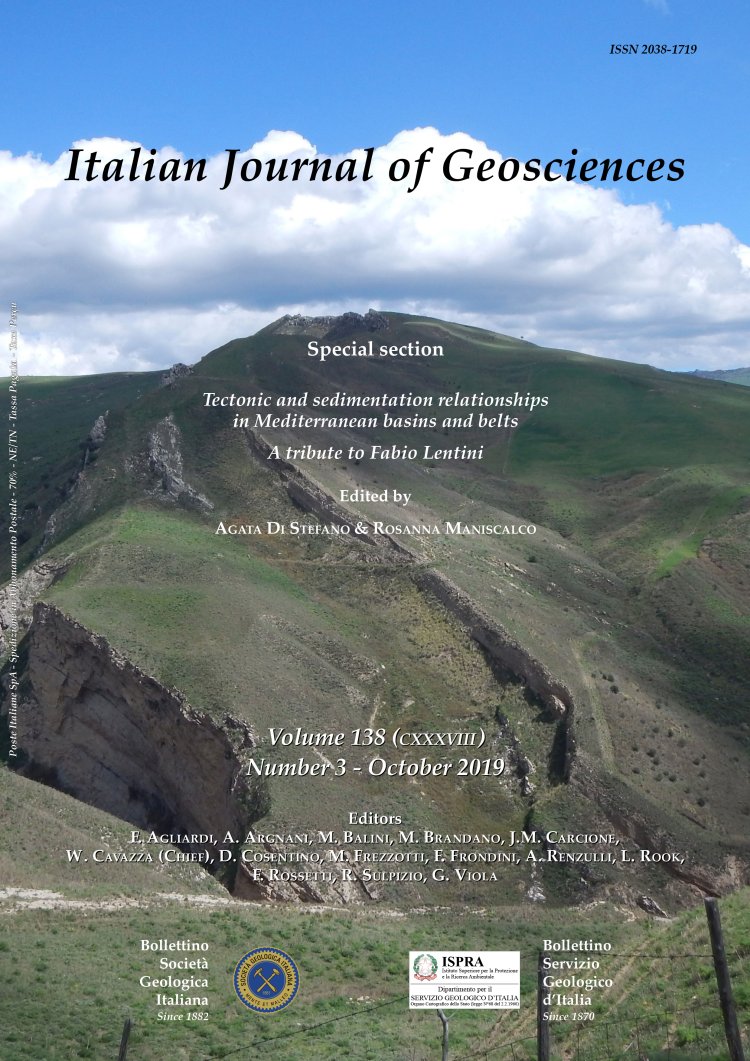
The ancient quarrying areas of the sandstones used in the UNESCO historical centre of Urbino (Marche, Italy) as inferred from geological, petro-chemical and physical-mechanical investigations
Patrizia Santi (1), Francesco Veneri (1), Gianluigi Tonelli (1), Alberto Renzulli (1), Fabrizio Antonelli (2) & Mario Tramontana (1)
(1) Dipartimento di Scienze Pure e Applicate, Università di Urbino Carlo Bo (Italia).
(2) Laboratorio di Analisi dei Materiali Antichi (LAMA), Università Iuav di Venezia (Italia).
Corresponding author e-mail: patrizia.santi@uniurb.it
Volume: 138 (2019) f.3
Pages: 456-470
Abstract
Many buildings of the historical centre of Urbino (Marche, Central Italy), included in the UNESCO World Heritage List, are characterized by portals consisting of sedimentary rocks such as limestones or sandstones. In order to identify the possible quarries of provenance of sandstones used for architecture, we addressed our research to the Sant'Ippolito area (20 km ESE of Urbino), where historical stonemasons have been extensively documented since the 14th century. Few traces of ancient exploitation indicate some extraction sites. All the investigated rocks (both from monumental portals of Urbino and geological outcrops) consist of fine- to medium- grained sandstones with a variable content of bioclasts. Two different groups were recognized (using the petrographic Q-F-R classification diagram): (i) lithic arenites belonging to the Colombacci Formation; and (ii) feldspathic lithic arenites referable to the Tripoli Unit. In particular, petrographic data indicate that the sandstones used in the historical buildings of Urbino, come from the arenitic lithofacies of the Messinian p.p. Colombacci Formation of the Sant'Ippolito area. In addition, comparative geochemical studies of whole rock major and trace elements point out three outcrops of the above formation, as possible sites of ancient extraction. Sandstones of the Tripoli Unit and the Marnoso-Arenacea Formation, widespread in the study area and near Urbino respectively, are ruled out as source rocks, based on both petrographic and geochemical data.
Anomalously high values of some heavy elements such as Pb, Zn and As, recognized in some of the portals, likely derive from a combination of various anthropogenic sources of pollution close to the investigated monuments, such as domestic heating and emissions from road traffic in the past.
From a mechanical point of view, the uniaxial compressive strength tests, carried out on a representative number of selected samples of the Colombacci Formation lithic arenites, yelded low values and high variability. Other investigated physical parameters also indicate that the stones used for the portals did not represent a good choice as building material. This implies that the stonemasons of Sant’Ippolito chose local raw materials for their availability, aesthetic qualities and good workability, rather than structural properties.
Keywords
Get Full Text